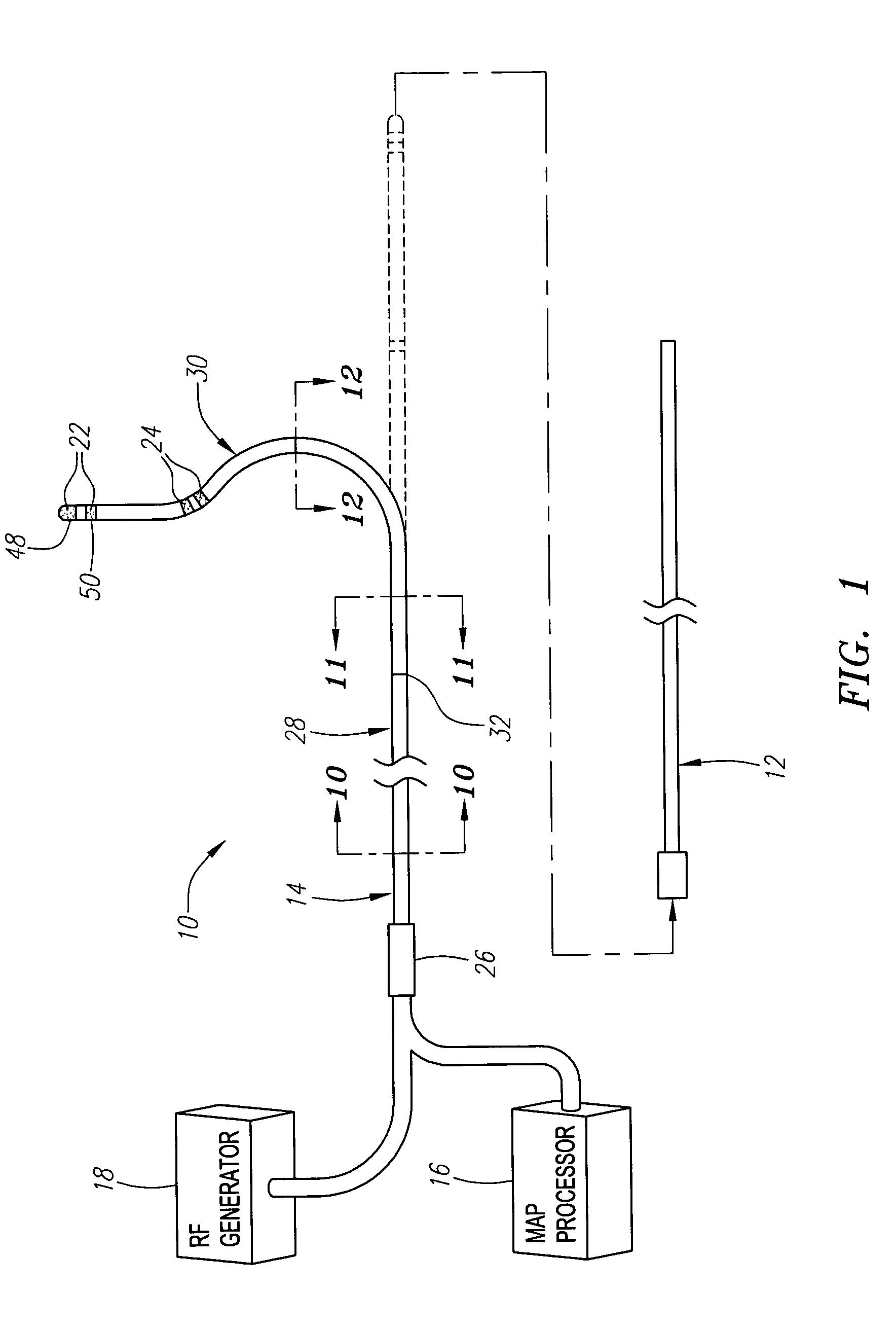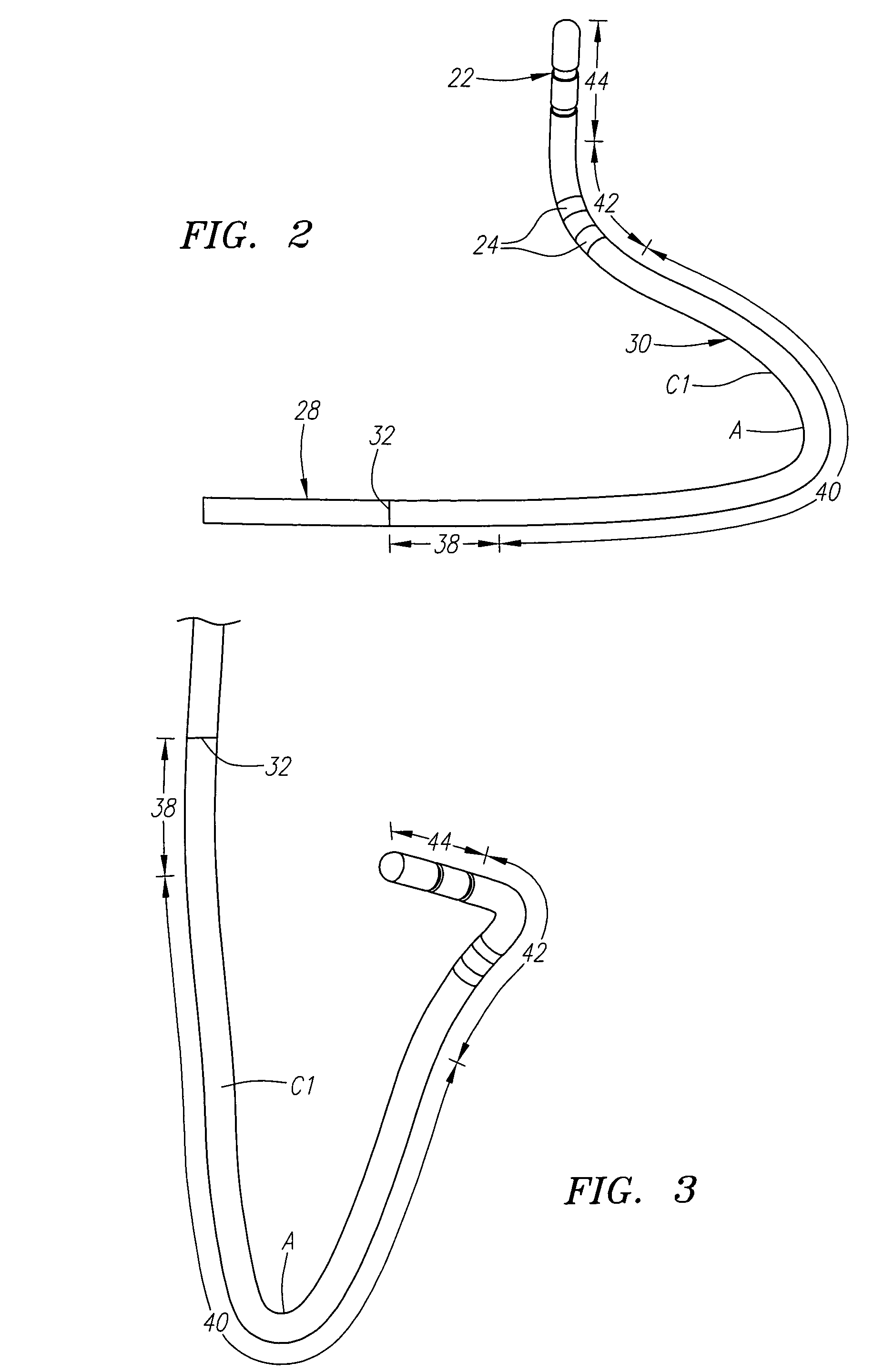Preshaped ablation catheter for ablating pulmonary vein ostia within the heart
a pulmonary vein and catheter technology, applied in the field of tissue treatment, can solve the problems of impaired hemodynamics, loss of cardiac efficiency, and disruption of normal activation of the left and right atria, and achieve the effect of maximizing the span of lesions around the ostium
- Summary
- Abstract
- Description
- Claims
- Application Information
AI Technical Summary
Benefits of technology
Problems solved by technology
Method used
Image
Examples
Embodiment Construction
[0035]Referring to FIG. 1, an exemplary tissue ablation system 10 constructed in accordance with the present inventions is shown. The system 10 may be used within body lumens, chambers or cavities for therapeutic and diagnostic purposes in those instances where access to interior bodily regions is obtained through, for example, the vascular system or alimentary canal and without complex invasive surgical procedures. For example, the system 10 has application in the diagnosis and treatment of arrhythmia conditions within the heart. The system 10 also has application in the treatment of ailments of the gastrointestinal tract, prostrate, brain, gall bladder, uterus, and other regions of the body. As an example, the system 10 will be described hereinafter for use in pulmonary veins, and specifically, to electrically isolate one or more arrhythmia causing substrates within the ostium of a pulmonary vein from the left atrium of the heart in order to treat ectopic atrial fibrillation.
[0036...
PUM
 Login to View More
Login to View More Abstract
Description
Claims
Application Information
 Login to View More
Login to View More - R&D
- Intellectual Property
- Life Sciences
- Materials
- Tech Scout
- Unparalleled Data Quality
- Higher Quality Content
- 60% Fewer Hallucinations
Browse by: Latest US Patents, China's latest patents, Technical Efficacy Thesaurus, Application Domain, Technology Topic, Popular Technical Reports.
© 2025 PatSnap. All rights reserved.Legal|Privacy policy|Modern Slavery Act Transparency Statement|Sitemap|About US| Contact US: help@patsnap.com



